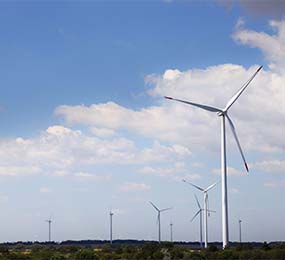The wind energy industry is undergoing a digital transformation, generating vast amounts of data from turbines, sensors, and meteorological stations. Effective management of this data is crucial for optimizing operations, improving decision-making, and maximizing the potential of wind farms. Cloud computing offers a powerful solution for storing, processing, and analyzing this data.
Key Benefits of Cloud Computing for Wind Farm Data Management:
- Scalability and Flexibility: Cloud-based solutions can easily scale to accommodate increasing data volumes and changing business needs. This scalability ensures that wind farm operators can handle future growth without investing in additional infrastructure.
- Cost-Effectiveness: Cloud computing eliminates the need for significant upfront investments in hardware and software. Instead, operators can pay for what they use, reducing costs and optimizing resource allocation.
- Enhanced Security: Cloud providers offer robust security measures to protect data from cyber threats. These measures include encryption, access controls, and regular security audits.
- Improved Collaboration: Cloud-based platforms facilitate collaboration among team members, enabling seamless sharing and analysis of data. This can lead to faster decision-making and improved operational efficiency.
- Advanced Analytics: Cloud computing platforms provide access to powerful data analytics tools that can help extract valuable insights from wind farm data. This includes predictive maintenance, performance optimization, and risk assessment.
- Disaster Recovery and Business Continuity: Cloud-based solutions offer built-in redundancy and disaster recovery capabilities. This ensures that data is protected in case of hardware failures, natural disasters, or cyberattacks.
Real-World Applications:
- Predictive Maintenance: Cloud-based analytics can help identify potential equipment failures before they occur, reducing downtime and maintenance costs.
- Performance Optimization: By analyzing historical and real-time data, operators can optimize turbine settings and maximize energy production.
- Grid Integration: Cloud-based solutions can facilitate seamless integration of wind energy into the grid by providing real-time data on energy production and forecasting future output.
- Remote Monitoring and Control: Cloud-based systems enable remote monitoring and control of wind farms, improving operational efficiency and reducing the need for on-site visits.
By embracing cloud computing, wind farm operators can unlock the full potential of their data, drive operational excellence, and contribute to a sustainable energy future.
To register or learn more about the Forum please check here: https://bit.ly/3K0rUIz
For more information and group participation, contact us: [email protected]
















